Polar Expedition to Spitsbergen
CalypsobyenPolar Station
At the Edge of the World…

Calypsobyen
Polar Station of Maria Curie-Skłodowska University
With the consent of the Governor of Svalbard, it was possible to establish the UMCS Polar Base in the abandoned coal mining settlement of Calypsobyen on the southeast shore of Bellsund. According to Norwegian law, all traces of human activity on Spitsbergen before 1946 are protected. As a result, the settlement consists of a collection of wooden buildings, each preserved to a different degree, and it constitutes a heritage park of industrial construction.
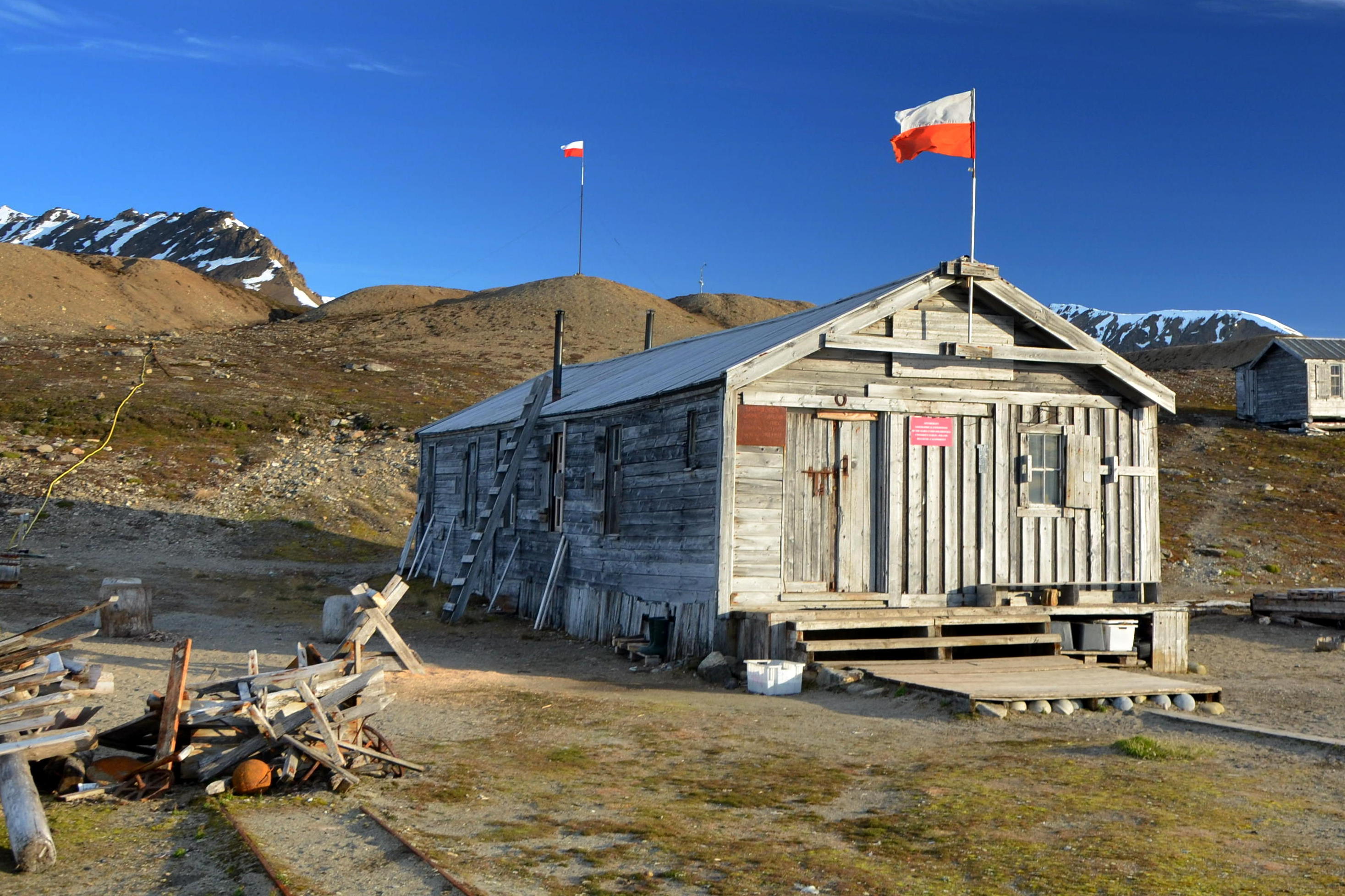
Polar Satation Calypsobyen – building A (Photo P.Zagórski).
Furthermore, because Calypsobyen, along with the entire northwest part of Wedel Jarlsberg Land, falls under the protection of the South Spitsbergen National Park, there are additional significant limitations on human presence and any kind of activity in the region. To comply with these limitations, members of UMCS Expeditions have conducted numerous repairs necessary to make the place habitable and suitable for research work. Considerable effort has been invested in all refurbishment and repair works to preserve the original appearance of all structures. In recent years, the Norwegian administration of the island has taken responsibility for renovating the settlement.
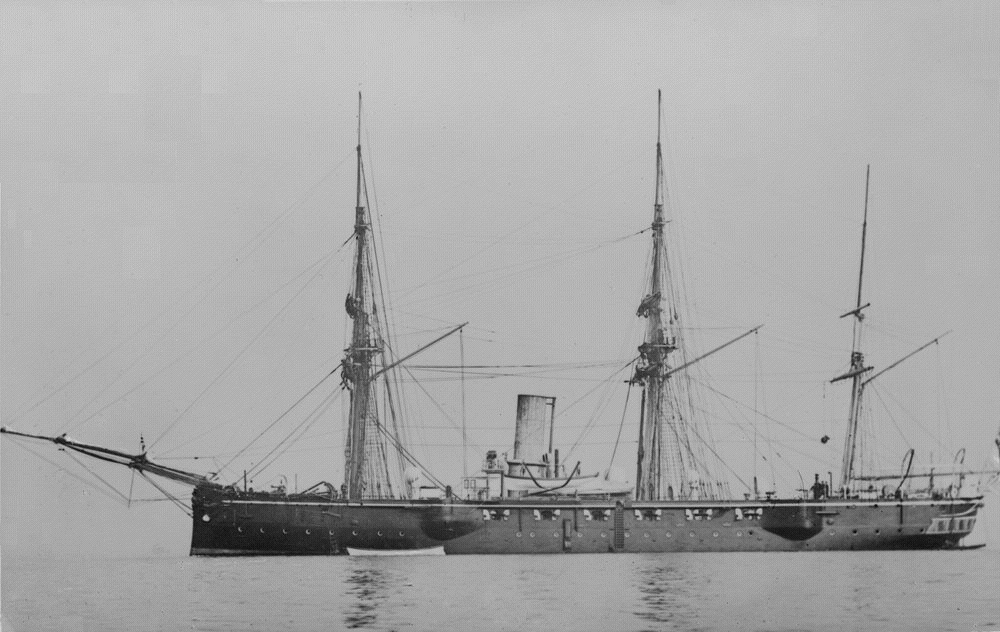
HMS ‘Calypso’ (Public Domain).
The name of the settlement comes from the ship HMS ‘Calypso’, which in 1895 visited and explored the Bellsund area as part of the British Navy’s Training Squadron.
The oldest construction building, known as ‘Camp Jacobsen’ (Strandhuset, Michelsenhuset), or ‘the house near Tyvjobekken’ (‘hus near Wydrzyca Stream’), is situated on the southeast slope. Originally, it was covered with birch bark and a layer of tundra. It was constructed in 1901 by members of expeditions sent by the businessman and politician Christian Michelsen (1857–1925), who later became the Prime Minister of Norway. This building is also considered one of the oldest structures related to the history of mineral excavation on Svalbard. At the beginning of the 20th century, it was still used by trappers during certain seasons as a base camp.


Main objects of Calypsobyen: A, B – main buildings of Polar Station and storage, on the right the remains of another object (white arrow); C – ‘Camp Jacobsen’, building near the Tyvjobekken (Wydrzycy Stream); D – farm building; E – radio building; F – ‘Blomlihytta’; G, H – transport barge (welbot) and mining truck; I – capstan (Photos P. Zagórski); 1 – used buildings, 2 – other buildings in good conditions, 3 – non‑existet buildings, 4 – fox ‘farm’, 5- capstan, 6 – meteorological station, 7 – drift mining, 8 – transport barge (welbot), 9 – mining truck.
Most of the buildings in Calypsobyen that still exist and are in use today (A, B) were erected in the years 1918–1919 by the Northern Exploration Company (NEC). The company had plans for black coal excavation in this region; however, due to poor quality and low seams, this investment proved to be unprofitable. In the following years, NEC commissioned the buildings for use during the winter season by trappers, who were also engaged in hunting polar foxes, seals, and polar bears. This arrangement lasted from 1922 until 1928. Building (A) served as a workshop for as long as the mine was operational. However, later, after two new rooms were added inside, it became a residential building. It was adapted and extensively repaired in the years 1986–1987 by participants of the first UMCS Expeditions and now serves as the primary housing facility for polar expeditions. During the winter season, it is used by residents of Longyearbyen for short-term lodging during snowmobile trips.

Calypsobyen in: 1936 (Photo A. K. Orvin, Norweski Instytut Polarny), in 2015 (Photo P. Zagórski).
Building (B) was originally a housing facility but is currently used for storage purposes. It has one large room, two smaller ones, and an annex known as the ‘power generator room.’ Another structure associated with NEC activities is a farm building, likely used as a smithy. While the NEC was still operating, a telegraph station (E) was constructed on a nearby raised marine terrace. During World War II, it was used by the Germans as a radio station. Independently of the NEC, in 1918, a trapper named Birger Jacobsen built one more building (F). Every winter from 1930 until the evacuation in 1941, it was occupied by another trapper named Ole Blomli. Later, the cabin became known as Blomlihytta. The last trappers to spend the winter in Calypsobyen were S. Olsen and J. Bakherud between 1969 and 1971. Members of UMCS Polar Expeditions use this building as a hydro-chemical laboratory. In the summer of 2010, the building was renovated by a Norwegian repair crew.
In addition to these buildings, other historical items can be found within the camp’s borders, including remnants of old mining tools (rail track sections, a trolley, boilers, wheelbarrows, numerous metal elements), a transport barge (whaler) named ‘Maria Theresa’ (G), and several boat wrecks. The drift mining is currently collapsed. One of the contemporary ‘showcases’ of Calypsobyen is the capstan (I). It was constructed in 1989 by a member of J. Zajączkowski’s expedition (nickname: ‘Rabbit’).

A sketch of the buildings in Calypsobyen when Orvin visited in July 1936. (Norwegian Polar Institute).

Calypsobyen in 1921 (Photo A. K. Orvin, Norweski Instytut Polarny).
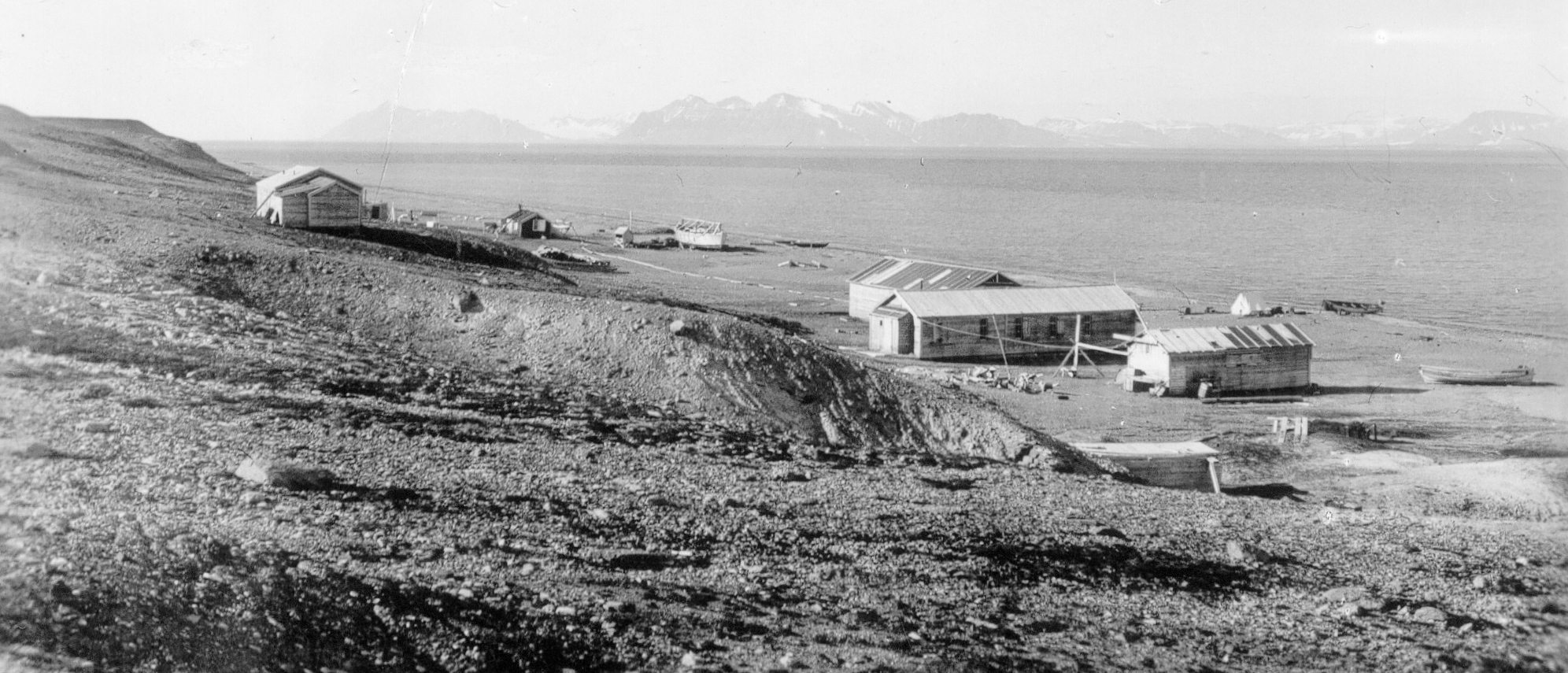
Calypsobyen in 1936 (Photo A. K. Orvin, Norweski Instytut Polarny).

Calypsobyen in 2014 (Phot P. Zagórski).
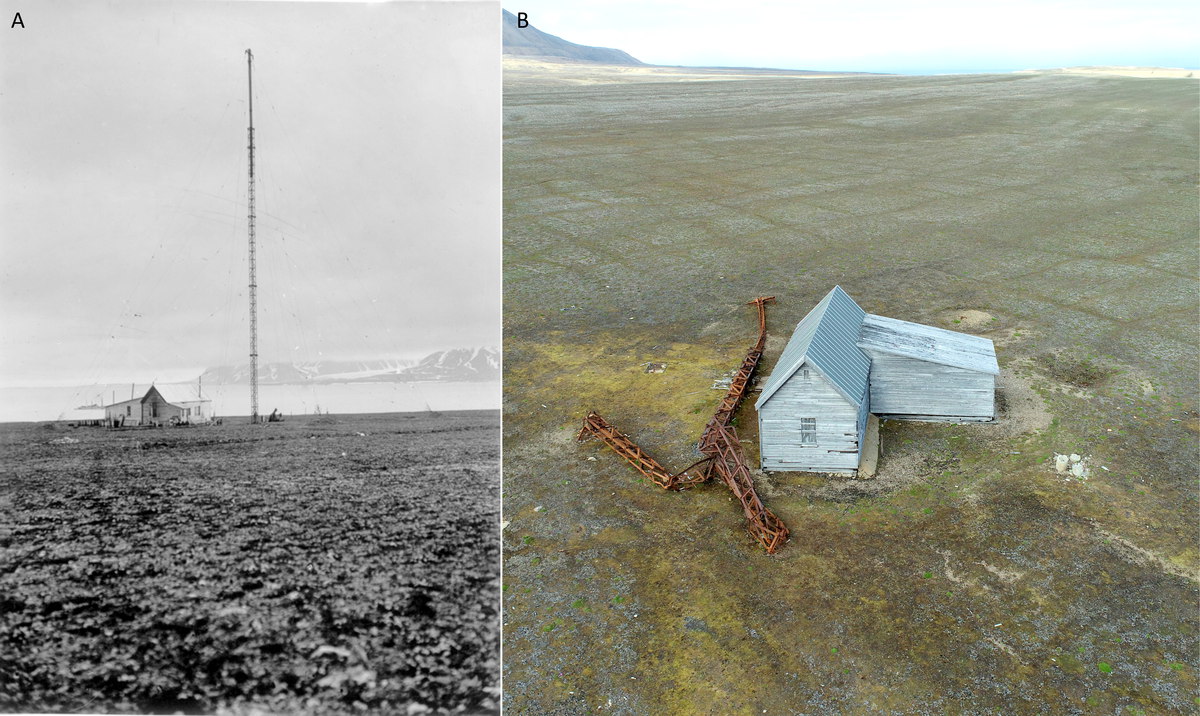
A- radio station and telegraph mast – 1921. (photo: A. K. Orvin/Norwegian Polar Institute); B- radio station 2022 (photo: P. Zagórski).
Logo
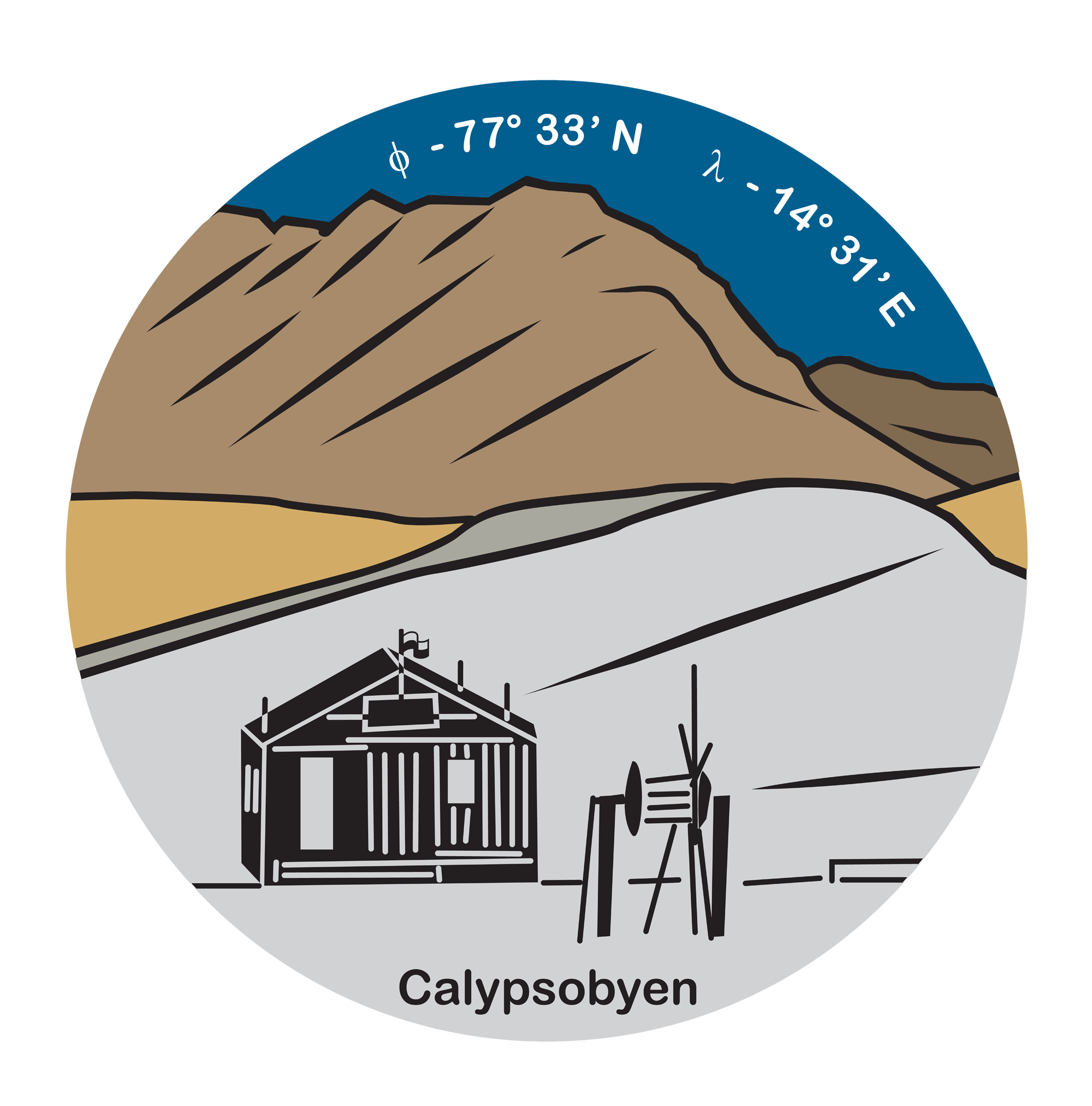

Contact Us
Institute of Earth and Environmental Sciences
Maria Curie-Skłodowska University
al. Kraśnicka 2D
20-718 Lublin
(+48) 81 537 69 96
inoz@mail.umcs.pl
Get Connected
All rights reserved © 2024 Piotr Zagórski